Here’s a first! Somehow I missed this when Bernunzio Instruments had and sold it a while back. The new owner left it with Kerry Char last year for some extensive restoration, and Kerry took all these photos (and did his own short blog about it on his site).
It is a custom Favilla Brothers harp guitar, built – judging by the appearance and label – sometime around 1910 or after. It was the first and only Favilla harp guitar known, until Kerry posted his photos, later hearing from the owner of another, different type of Favilla harp guitar (if this owner finds this post, please share photos with us!).
This was obviously influenced by the Gibson harp guitar, the most ubiquitous and popular harp guitar of the era. This one has a flat top and back, unlike Gibson’s carved version. The most unusual feature is that it has 12 strings on the neck, not uncommon for the time, but always unusual on a harp guitar. Sub-basses number 9, which may have been a Gibson-influence as well (pre-1910, 9 subs seems to be the most common Gibson configuration, though never seen in a catalog…someday I’ll collate and post all the 9-bass historical photos I’ve been accumulating, along with Benoit…).
Kerry says that the story is that the owner had the Favilla brothers build this for him and that any time it needed repairs he brought it back to them. That might explain that, while it looks “wrong,” it still somehow looks “right.”
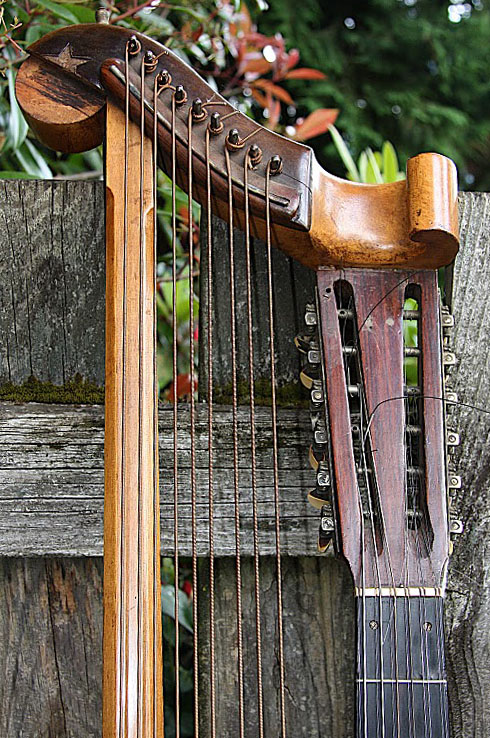
The interesting headstock array looks all-original

The elaborate tailpiece is definitely a later add-on. The original bridge is still intact, with the 21 holes filled. Kerry plans to restore it back to its very first appearance. The pickguard is the tricky decision. Was there one originally, like the Gibson? When was this one installed? It is not the prettiest thing in the world, made from phenolic paper (a resin-impregnated cloth, like that used for printed circuit boards).
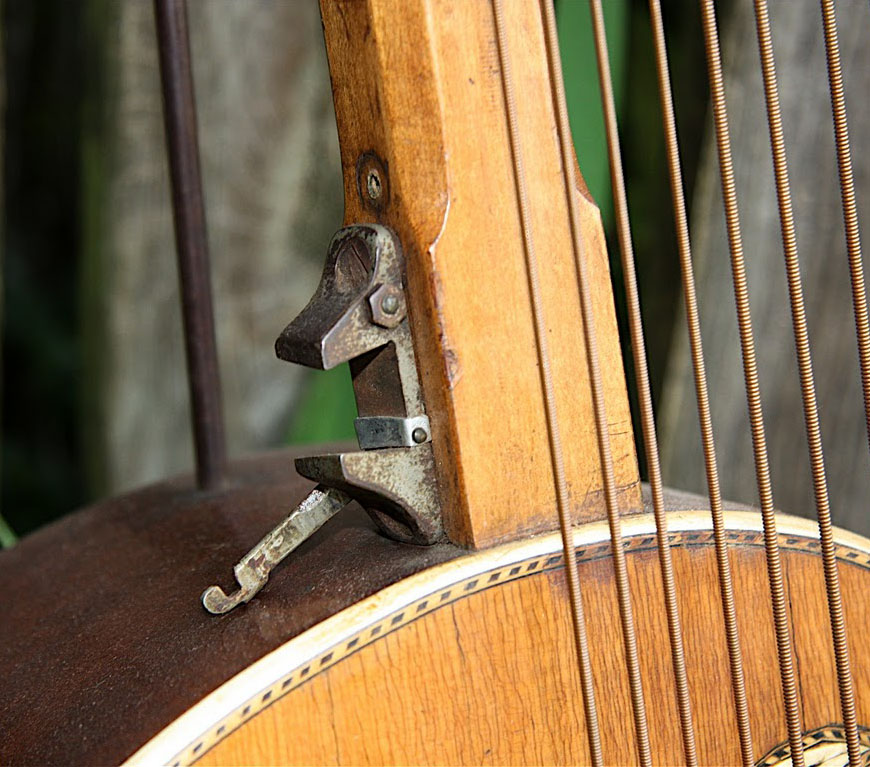
This bass support add-on is what is left of an attached sheet music holder.
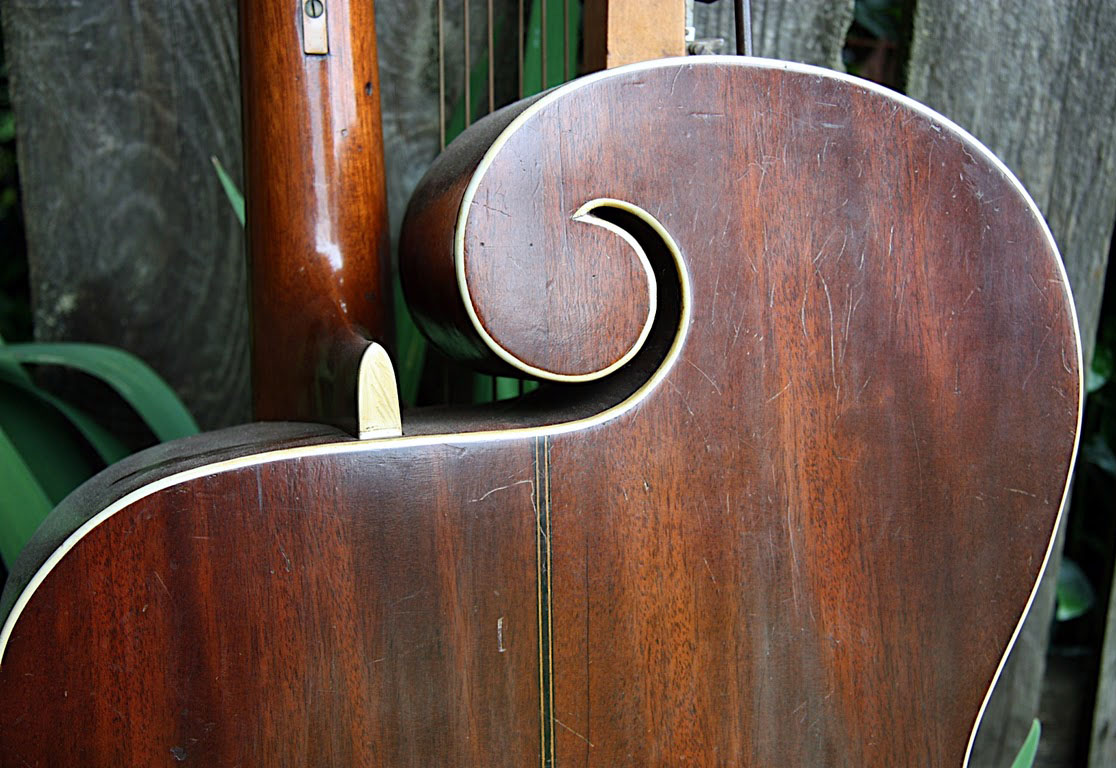
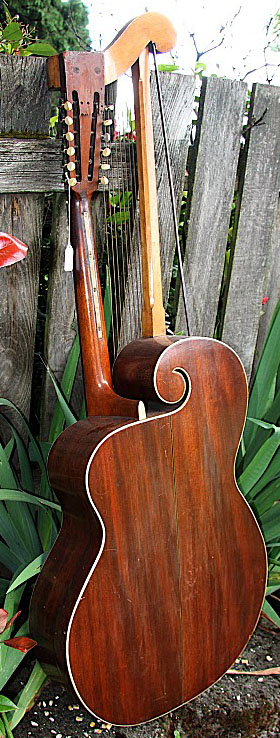
Italian-looking and Gibson-ish all at the same time, don’t you think?
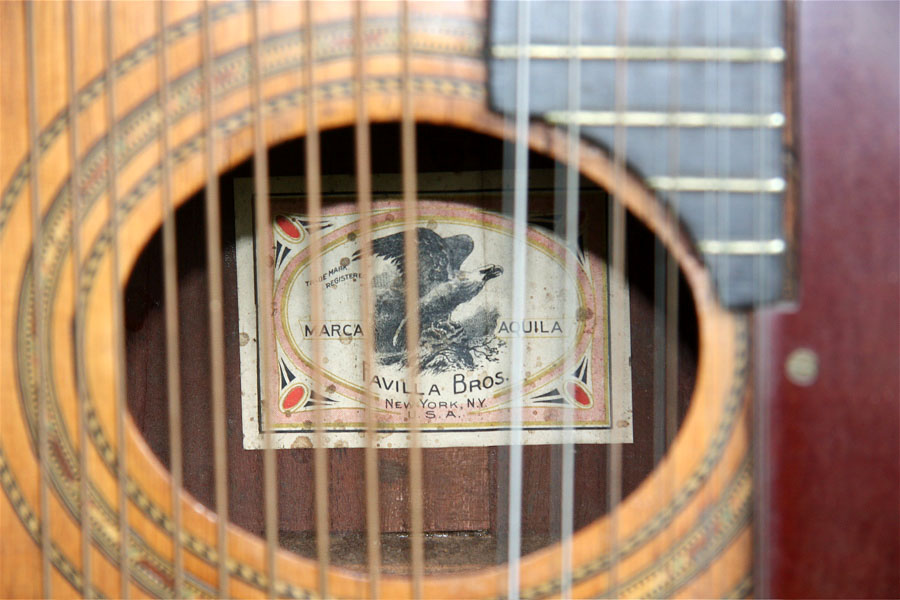
There is some Favilla information on the web, including much from one of the family members. Note the nice original label. One site (Thomas Favilla’s) dates’ this up to approximately 1910. Another states up to 1915. I think that 5-year window sounds about right for this custom instrument.
I’m anxious to see new photos of it when Kerry finishes someday…it is one rare HG bird!

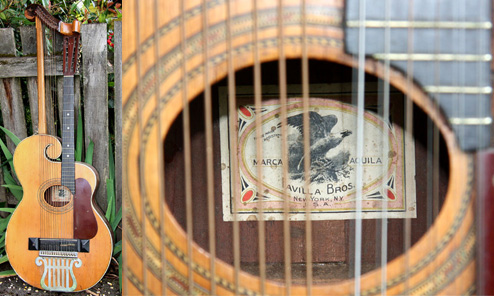
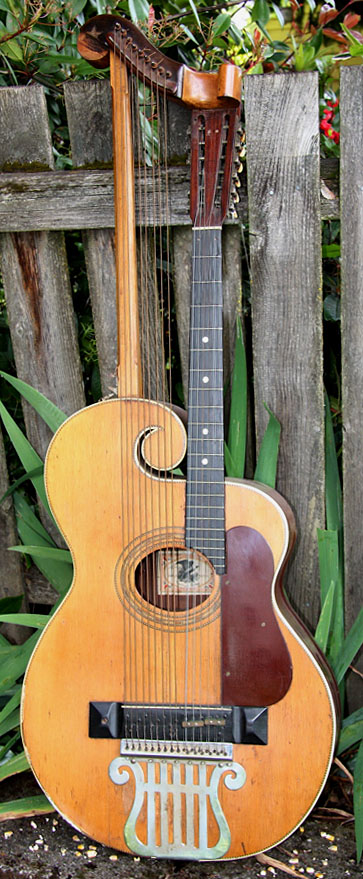
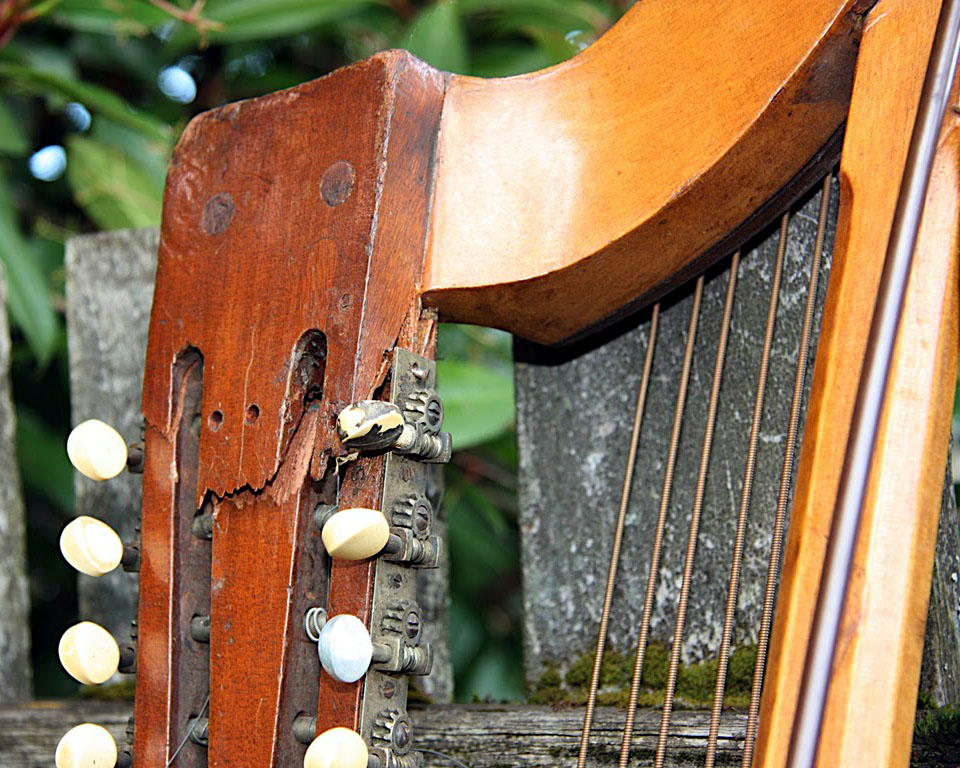
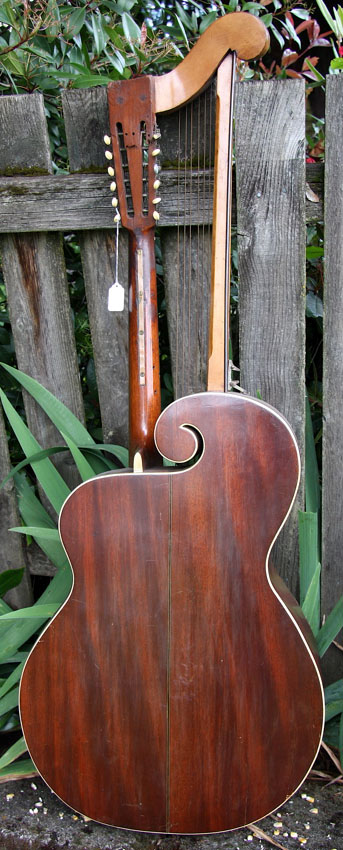
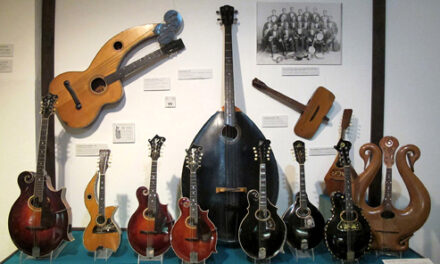
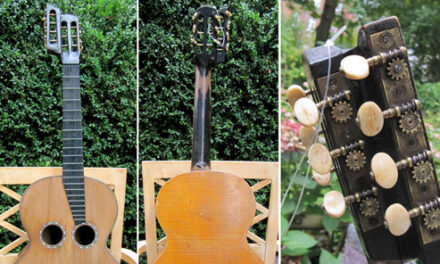
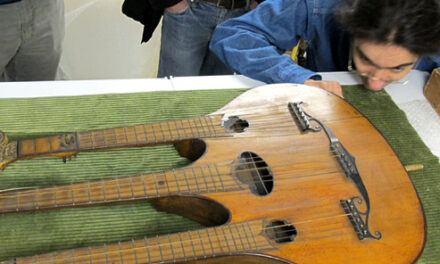
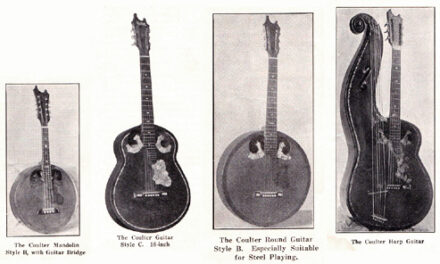
Check out the “external” truss rod on the back of the neck!
That could do some damage to the left hand? Yikes!!! lol